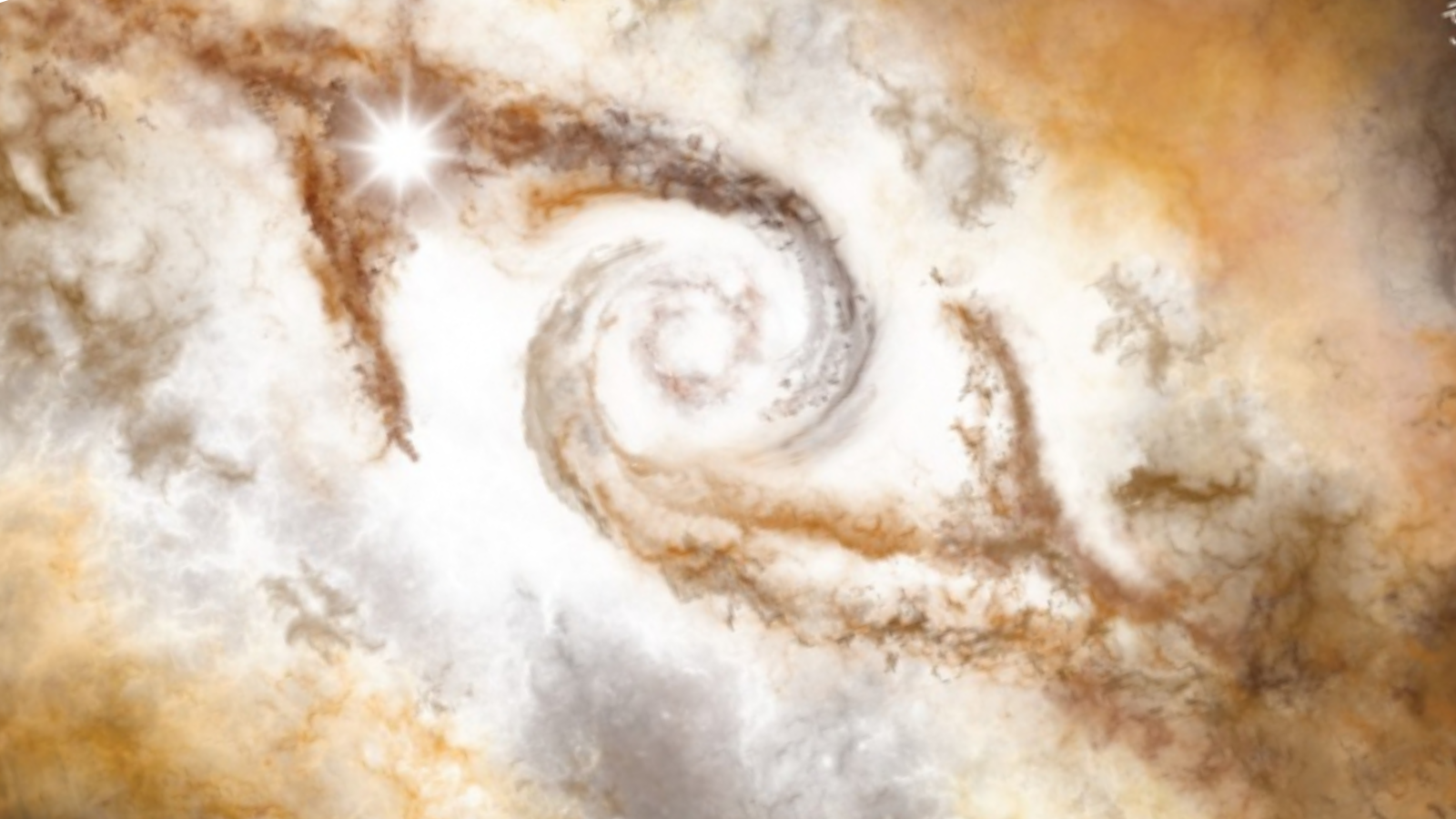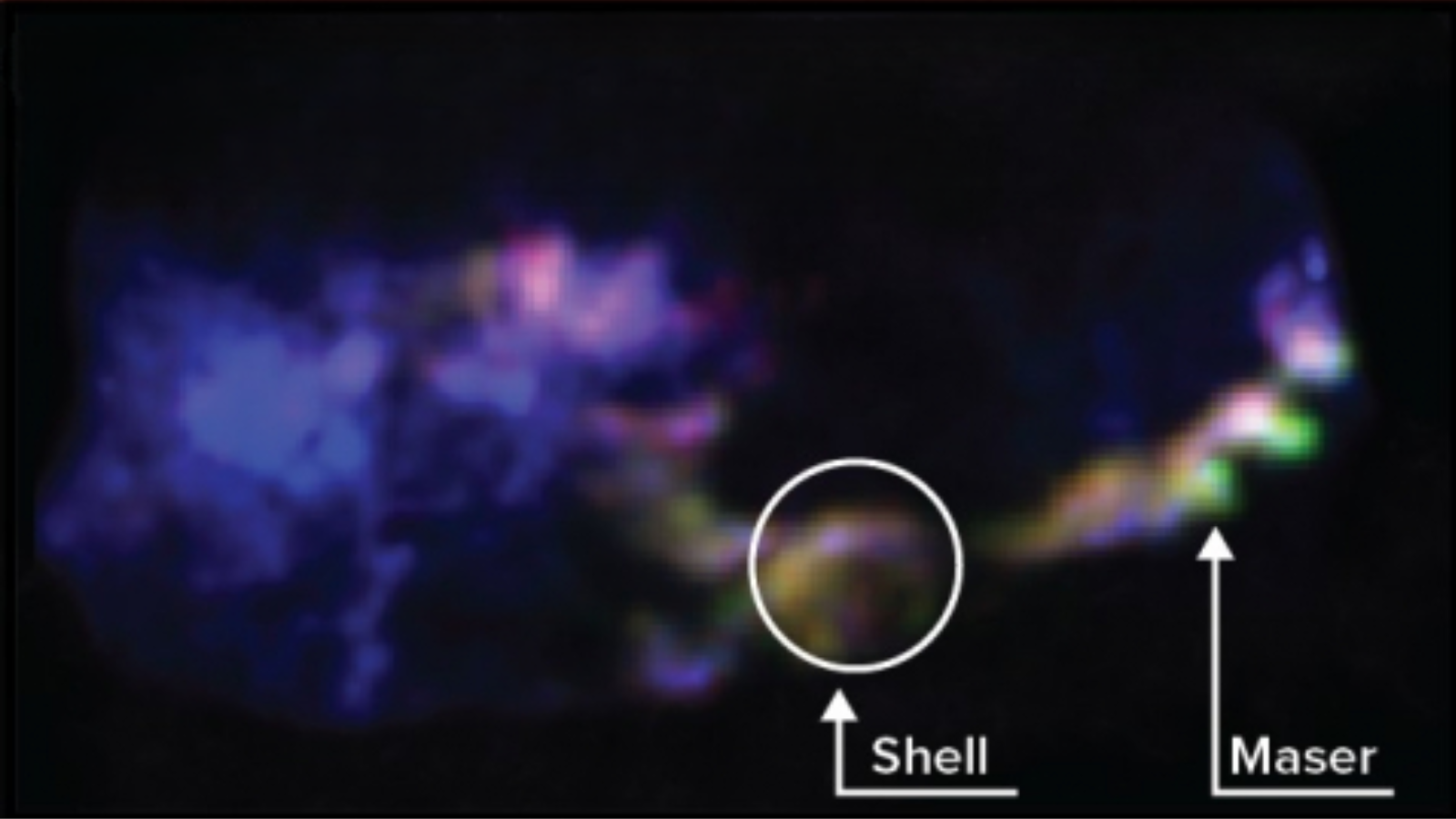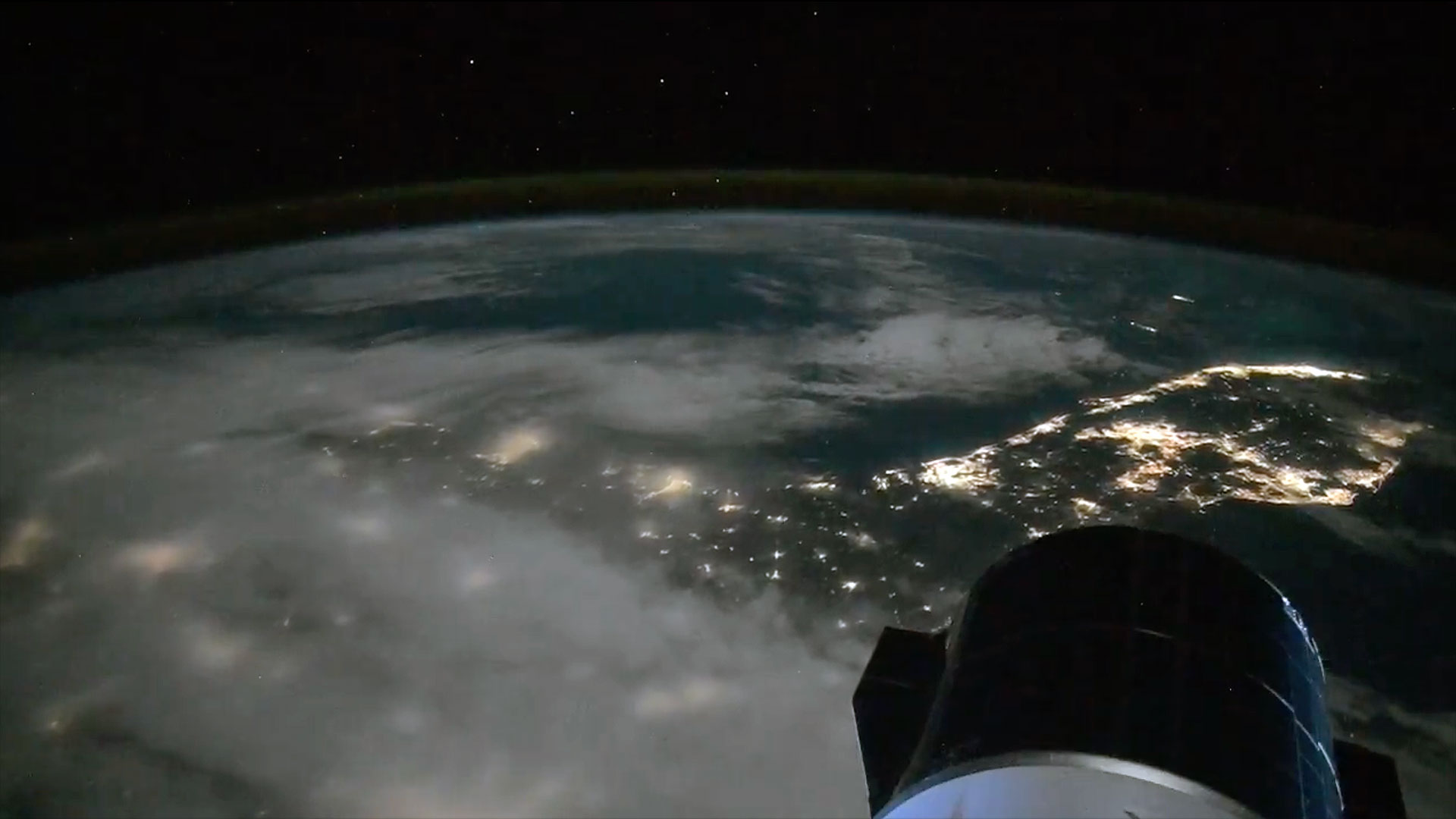This 200-light-year-wide structure could be feeding our galaxy's center: 'No one had any idea this cloud existed'
"No one had any idea this cloud existed until we looked at this location in the sky and found the dense gas."

Astronomers have discovered a vast cloud of gas and dust stretching out for a staggering 200 light-years and lurking in a poorly explored region of the Milky Way.
The structure, named the Midpoint cloud, is an example of a Giant Molecular Cloud (GMC). It was discovered by the team using the Green Bank Telescope. Peeling back the layers of the Midpoint cloud, they found dynamic regions including several potential sites of new star formation and dense lanes of dust feeding the heart of our galaxy.
"No one had any idea this cloud existed until we looked at this location in the sky and found the dense gas," team leader and National Radio Astronomy Observatory scientist Natalie Butterfield said. "Through measurements of the size, mass, and density, we confirmed this was a giant molecular cloud."
The active region of the GMC and its thick lanes of matter could reveal how material flows from the Milky Way's disk to the very heart of our galaxy.
"These dust lanes are like hidden rivers of gas and dust that are carrying material into the center of our galaxy,” Butterfield continued. "The Midpoint cloud is a place where material from the galaxy’s disk is transitioning into the more extreme environment of the galactic center and provides a unique opportunity to study the initial gas conditions before accumulating in the center of our galaxy."
The gas within the Midpoint cloud exists in a turbulent state, which mirrors conditions found within gas at the Milky Way's center. This chaotic motion could be triggered by material flowing along dust lanes itself or by clashes between the Midpoint cloud and other molecular clouds.

Also within the Midpoint cloud are several clumps of dense gas and dust that could be about to collapse and birth new stars.
Breaking space news, the latest updates on rocket launches, skywatching events and more!
One clump, designated Knot E, appears to be a small but dense cloud of gas that is in the process of being eroded by the radiation blasted at it by stars in its proximity. Formations like this are referred to as free-floating evaporating gas globules (frEGGs).
The astronomers also discovered a new source of intense microwave radiation called a "maser" that could be further evidence of intense star formation within the Midpoint cloud.
The researchers didn't just discover evidence of stellar birth with this GMC, however. A shell-like structure in the Midpoint cloud appears to have been caused by the explosive supernova deaths of massive stars.
The research conducted by the team suggests the Midpoint cloud is vital to the flow of matter from the disk of the Milky Way to its heart.
This would feed star formation in the thick central stellar bar that churns around the center of our galaxy. Similar structures of dense stars are found in other barred spiral galaxies.
That means further investigation of this cloud and its surroundings could help develop a clearer picture of how the building blocks of stars gather at the center of galaxies.
"Star formation in galactic bars is a bit of a puzzle," team member and Green Bank Observatory scientist Larry Morgan said. "The strong forces in these regions can actually suppress star formation.
"However, the leading edges of these bars, such as where the Midpoint is located, can accumulate dense gas and trigger new star formation."
The team's research was published on Wednesday (July 16) in The Astrophysical Journal.

Robert Lea is a science journalist in the U.K. whose articles have been published in Physics World, New Scientist, Astronomy Magazine, All About Space, Newsweek and ZME Science. He also writes about science communication for Elsevier and the European Journal of Physics. Rob holds a bachelor of science degree in physics and astronomy from the U.K.’s Open University. Follow him on Twitter @sciencef1rst.
You must confirm your public display name before commenting
Please logout and then login again, you will then be prompted to enter your display name.
